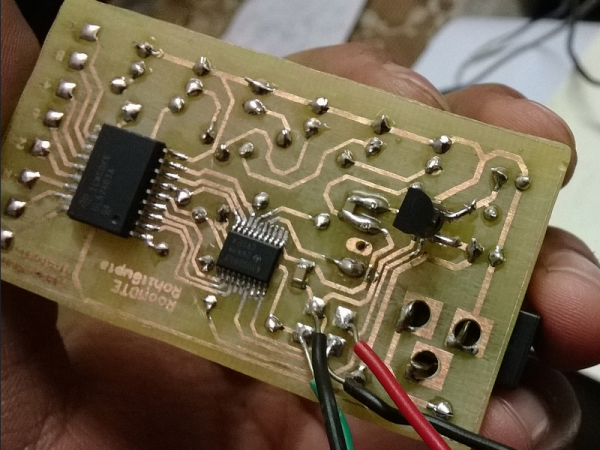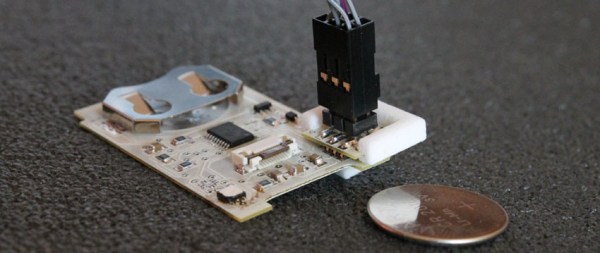[Rohit] wrote in to tell us about a project he has created. Like most projects, his solves a problem. Sometimes while sleeping, a mosquito will infiltrate his room. He has a mosquito repellent machine but there are 2 problems, he has to get up to turn it on/off and it smells bad when in use. [Rohit] only needed a remote-controlled mosquito repelling machine but decided to make a 6 channel system he calls the RoomMote.
From the beginning, the plan was to use an old Sony TV remote to do the transmitting. The receiver unit was completely made from scratch. [Rohit] designed his own circuit around a surface mount MSP430 chip and made a really nice looking PCB to fit inside a project box he had kicking around. The MSP430 chip was programmed to turn relays on and off based on the signals received from the Sony remote. These relays are inside an electrical box and control AC outlets. Just plug in your light, radio or mosquito repellent into the appropriate outlet for wireless control. Code for the MSP430 is made available on [Rohit’s] project page for anyone wanting to make something similar.
In addition to the relays, there is an RGB LED strip attached to the custom circuit board. By using more of the Sony remote’s buttons, the LED strip can output 6 pre-programmed colors, some mood lighting for the mosquitoes!
Continue reading “RoomMote, A DIY Remote For Your Room Project”











 Today! NYC Hardware Hackathon
Today! NYC Hardware Hackathon May 9 & 10 Hackaday Prize Worldwide: Los Angeles
May 9 & 10 Hackaday Prize Worldwide: Los Angeles Saturday, May 16 BAMF Meetup
Saturday, May 16 BAMF Meetup May 23 & 24 LayerOne Conference
May 23 & 24 LayerOne Conference









